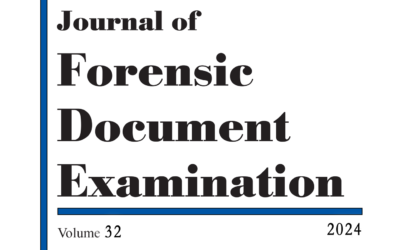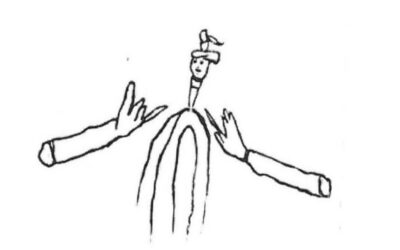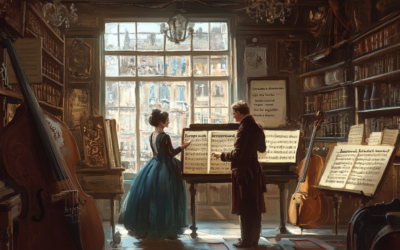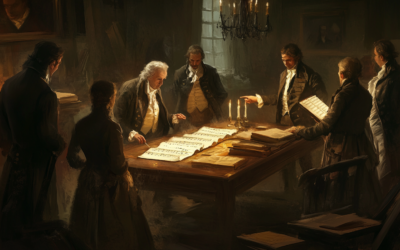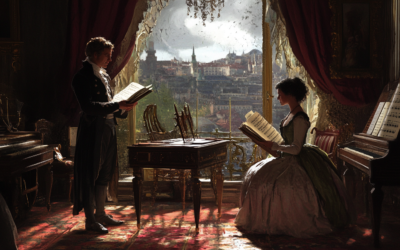Truth or Deception?
The Curious Case of Mozart’s "Lullaby"
Examining the murky history of “Schlafe mein Prinzchen, schlaf ein” and its questionable authorship
In the sprawling world of Mozartian myths, few tales have endured as long or as stubbornly as the origins of the lullaby Schlafe mein Prinzchen, schlaf ein (“Sleep, My Little Prince, Go to Sleep”).
For nearly two centuries, this piece has been attributed to Wolfgang Amadeus Mozart, despite enduring questions over its authenticity.
First published by Nissen, Constanze Mozart’s second husband, it was only in 1826 that he informed publisher André of the piece’s dubious provenance. While “experts,” Nissen claimed, deemed it worthy of Mozart, Mozart’s sister, Nannerl, held no memory of her brother writing such a tune.
Intriguingly, Constanze, usually vocal in promoting her husband’s legacy, made no public comment, though her personal diary reveals a hint. In a September 17, 1798 entry, she wrote of sending “another piece of Mozart’s in place of the lullaby” to Dr. Feuerstein. Did she suspect, even then, that Mozart may not have authored this work?
Mozart: The Fall of the Gods
This book compiles the results of our studies on 18th-century music and Mozart, who has been revered for over two centuries as a deity. We dismantle the baseless cult of Mozart and strip away the clichés that falsely present him as a natural genius, revealing the contradictions in conventional biographies. In this work, divided into two parts, we identify and critically analyze several contradictory points in the vast Mozart bibliography. Each of the nearly 2,000 citations is meticulously sourced, allowing readers to verify the findings. This critical biography of Mozart emerges from these premises, addressing the numerous doubts raised by researchers.
"Truth in music, as in history, requires more than wishful attribution."
Mozart: The Fall of the Gods
Constanze’s Unreliable Testament
Constanze Mozart remains a controversial source on matters of Mozart’s oeuvre. Could her diary entry imply her own doubts? Over time, the lullaby’s shaky origins gained traction, with figures like Johann Evangelist Engl, a prominent advocate of Mozart’s legacy, affirming the lullaby’s authenticity in the 1892 Annual Report of the Mozarteum. His stance solidified the piece in the Köchel catalogue as K.350. But musicologist Max Friedländer refuted this claim, proving that this celebrated lullaby was, in fact, the work of Bernhard Flies, a minor composer who published it in 1795. Later research revealed that even Flies had borrowed it from an earlier melody by Johann Friedrich Anton Fleischmann. Over time, Fleischmann’s lullaby became mistakenly attributed to Flies, then to Mozart—a confusion that would last over fifty years and persist, falsely, to this day.
An Ideological Battle for “Mozart’s” Lullaby
In 1944, as authenticity disputes resurfaced, German musicologist Herbert Gerigk, known for his involvement with Nazi-aligned musical publications, took a vehement stance. For Gerigk, Friedländer and Einstein’s work discrediting the lullaby’s Mozartian origins was not just a scholarly objection—it was an affront to Aryan cultural purity. Rather than acknowledging scholarly evidence, he painted Flies, Friedländer, and Einstein as scheming Jewish interlopers. “The German people desire this piece for Mozart,” he argued, sidestepping questions of authenticity in favor of ideology. The result was a chilling example of musical propaganda in service of the regime.
The Apocryphal Piece That Refuses to Die
Today, this questionable lullaby persists in Mozart’s name, nestled innocuously among beginner’s scores. My First Book of Mozart, arranged by David Dutkanicz, includes it as a legitimate Mozartian work, and the Mozart-Schaum Edition, aimed at young pianists, introduces it as “authentic.” Both editions acknowledge its contentious history only in modest footnotes, offering a single line to hint at the debate: “Most people believe this to be Mozart’s work, others say it is spurious.” But, one might ask, does this vague disclaimer suffice to remedy two centuries of mistaken identity?
You May Also Like
Unveiling the Truth Behind Mozart’s Thematic Catalogue
Anna Trombetta, Professor Martin W. B. Jarvis from Charles Darwin University, and Luca Bianchini, have published a peer-reviewed article titled Unveiling a New Sophisticated Ink Analysis Technique, and Digital Image Processing: A Forensic Examination of Mozart’s Thematic Catalogue. This research, which underwent an extensive double-blind peer review, has appeared in a journal that serves as a global reference point for forensic document examiners and court specialists.
Unveiling the Truth Behind the Drawing
H. S. Brockmeyer’s latest research unravels the mystery behind a July 5, 1791, letter from Mozart to his wife. This remarkable investigation uncovers the original, unembellished drawing Mozart included—vastly different from the altered version widely reproduced in collections today. The discovery raises significant questions about historical accuracy and the intentional shaping of Mozart’s legacy.
The Deceptive Nature of Mozart’s Catalogue
The Thematic Catalogue traditionally credited to Mozart is fraught with inaccuracies, suggesting that many of his famous works might not be his at all. This prompts a necessary reevaluation of Mozart’s legacy and the authenticity of his compositions.
The Mozart Myth Unveiled: A Deeper Look
Mozart’s legacy is far from the untarnished narrative of genius that history would have us believe. The web of deceit woven around his name by those closest to him, including his own widow, reveals a much darker story.
The Other Side of Mozart’s Legacy
Explore the untold story of Mozart, where myth and reality collide. Our critical examination of his life and works reveals a legacy shaped by profit, myth-making, and misattribution. Join us in uncovering the truth behind the man and his music.
The Deception Surrounding Mozart’s Legacy
Anton Eberl’s confrontation with Constanze in 1798 exposed a web of deceit surrounding Mozart’s legacy, revealing that several of his compositions were falsely attributed to the late composer. This chapter uncovers the ethical dilemmas and controversies that have marred the posthumous reputation of one of history’s most celebrated musicians.


